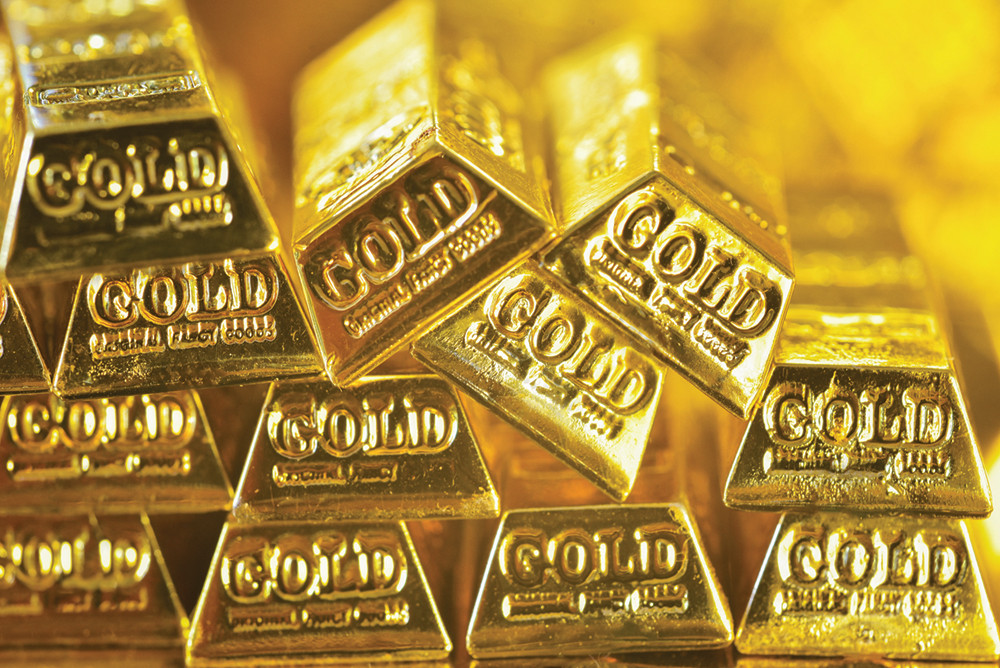
The love affair with gold continues into 2019. Although gold lost most of its luster in 2018, the appeal of gold cannot be underestimated. Gold had to bear the brunt in the preceding year with constant rate hikes distorting its demand for most parts of the year. Having commenced the year at $1302.96 per troy ounce, the bullion shed 10.97 percent tumbling to $1159.96 per troy ounce by August. It did manage to regain some lost ground by the end of the year closing at $1282.25 per troy ounce. It earned the dubious accolade of being surpassed by palladium as the most valuable asset in the precious metals bracket - a distinction last occurring in 2002 when the yellow metal languished at $450 per troy ounce.
Factors Affecting Gold in 2018
Gold was pressurised by three main factors in 2018 - rising rates, appreciating greenback and low levels of equity market volatility. Market analysts opine that these headwinds have now turned into tailwinds in 2019. Real yields are the difference between the cash yields and the inflation rates. The yields had been on a continuous rise in 2018 and in October, the US 10-year real yield inclined above one percent. In hindsight, it was the first time since early 2011 that the real yields had breached that mark.
When gold does not have a yield that it can rely upon, these numbers are important. Simply put, if the traders are receiving one percent above the inflation rate for holding a risk-free asset, why to part the investments in gold becomes the inevitable question. Another startling revelation stated that the assets held by the world’s biggest gold-backed exchange traded fund (ETF) GLD fell by $2.7 billion to $31 billion in 2018.
In recent times, the real rates have reversed. The expectations for inflation have hardly moved but the yield on the 10-year treasury has succumbed to 2.77 %. Although the Federal Reserve did raise the rates by 25 basis points at the December meeting, real rates may have peaked as the Fed cycle nears its completion. As a result, the opportunity cost for holding gold has tumbled.
Gold Tracking with Volatility
Gold prices have benefitted lately from the rise in equity market volatility due to the rising interest rates. Gold prices and the VIX index followed a similar path of calm and composure throughout 2017. There was not a single day during 2017 in which the gold price moved higher or lower by 2.5% or more – the lowest recorded volatility since 2006.
In the period between 3 and 10 October 2018, the VIX spiked from 11.61 to 24.98. At these levels, it remained not more than 10 points higher than at any time during 2017. Gold followed the VIX higher, reaffirming its status as an alternative form of investment or safe-haven. Gold also rallied as stock markets dropped as a chain reaction to the Fed’s December rate rise.
The final push in 2018 in the form of a stronger US Dollar may have also blown itself out of proportion. As a result, the DXY index inclined from 89 in February to a peak level of 97.5 in November and has edged lower since. With the ECB implementing the process of policy normalisation by ending QE, the interest rate differences look set to converge in the forthcoming days.
Catalyst for Gold
Any asset in the financial markets requires a catalyst and for gold, it is likely to be the portfolio flows. Most economists would look at the supply and demand elements when attempting to price any asset especially a commodity. The production for gold is price inelastic and the 190,000 tons of gold available in the form of bullion, coins and jewelry can be brought at a low cost.
Gold traders are the marginal buyers of gold and resonate as the largest impact makers. According to the World Gold Council, in Q3 2018, central banks globally bought the largest amount of gold to add to their already bulging reserves since 2015. In retrospection, Russia’s net purchases hit their highest i.e. 92.2 tons whereas in a first, the Polish central bank brought gold for the first instance since 1998. Global reserve managers are likely to be a continuing source of demand in 2019. While USA, Germany, France and Italy are holding more than 60% of their reserves in gold, nearer home, China and India are holding 2.3% and 5.8% respectively.
Conclusion
Gold has been in the news lately for all the right reasons as investors flock to the yellow metal. Since gold has fittingly been termed as an investment to safeguard against all uncertainties, time will only prove whether a lackluster 2018 turns into a Happy New Year in 2019.
Vivek Risal is associated with Mercantile Exchange Nepal Limited in the capacity of Manager in Research and Development Department. He can be contacted at r&[email protected]





